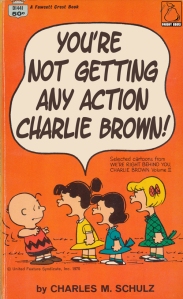Context and credibility: the magic ingredients
AIDA, or Attention, Interest, Desire and Action is a classic copywriting formula, but it’s come to light more recently that it lacks a somewhat vital component. In some situations, it may very well still work, but in others, that missing ingredient is going to be a ‘dealbreaker’. And that missing ingredient is context.
In a time when we are constantly bombarded with messages, we all need just a little more context – who is it sending me this message, why are they contacting me and why should I trust them? If this context is missing, then attention may not necessarily lead to interest, nor that interest to desire – and ultimately, you may not get the action you want as a result.
So, what’s a better way to approach the construction of these messages then? Many reliable sources cite the 6 + 1 approach, which also establishes you as a source of authority in your reader’s eyes. The process…
1. Context: Firstly, you should be looking to establish the context. If you don’t answer the reader’s implicit question ‘who are you, and why are you talking to me?’ you’ve already lost them, because they’ve moved on or hit delete.
2. Attention: Once you’ve established the context, you can get your marketing pants on and really grab your audience’s attention. Now is the time for your compelling text, or headline and your eye-catching visual presentation.
3. Desire: Nowadays especially, you’ve only got each person’s attention for a short amount of time, so in that time make sure that you’ve made them want something – badly enough so that they keep reading. It’s your job to quickly convince them to keep reading, by describing something they might be experiencing, an outcome they want or an idea they hadn’t yet thought of.
4. Paint a picture: By now your audience should be convinced that they need to take some kind of action, but you possibly need to drive home that point by illustrating what would happen if they didn’t do anything to take advantage of your product or service. You can make this bit emotional if that fits.
5. Solution: Once you’ve painted that picture, you should quickly move to show them how you provide the solution. Make sure you put yourself in their shoes and outline the benefits from their point of view.
6. Call to action: This is the logical end of the ‘story’, so outline the single next step that they must take and explicitly ask them to do it. Just the one action is probably enough at this stage, whether that be getting them to call, visit your website, or join your Facebook etc.
But what is the +1? The whole process above won’t work quite the same without adding one more ingredient – credibility. The reader needs to believe what you say, and believe that you are rightfully in a position to instruct them. Build credibility in the whole way throughout your messaging, and then watch them follow.